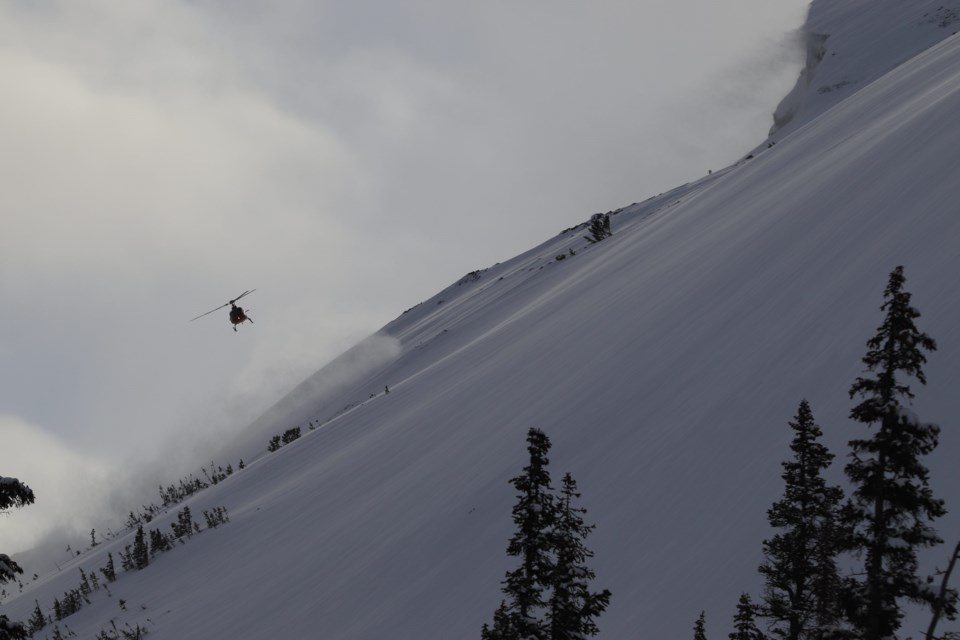Scott Hayes | [email protected]
Local Journalism Initiative Reporter
Monday evening’s Stories from the Mountains had its fair share of first-person avalanche tales and a healthy helping of handy advice on how to prepare for your backcountry sporting adventure.
Training was highly recommended, too. Speakers suggested www.Avalanche.ca and other websites to review the weather, dive deep into stats on environmental conditions and cross-check avalanche indices just as a start.
One topic that kept coming back: keeping your head in the game, and keeping it straight.
“This is our main point… identify your bias,” said Marcus Waring, visitor safety technician with Jasper National Park.
“That’s going to be a reoccurring theme throughout this: what lens are we making all these decisions through? How badly do I want to ski this?”
Waring paid as much attention to encouraging people to read mountaineering blogs as he did to getting them to look at themselves clearly in the mirror, metaphorically speaking.
“If there’s a race for tracks, or if you see a bunch of tracks on the slope, that doesn’t mean it’s safe to ski. That’s an easy way to bias your decision making.”
“We get those things – that bias – ‘Oh, I tried it once. Worked out pretty good [the] first time,’ ” said Deryl Kelly, Jasper National Park’s visitor safety supervisor.
Waring offered an acronym called FACETS. The first letter “F” is for familiarity, which sounds reassuring but can be deadly.
“You’ve been there before, you’ve skied this thing a bunch, or it looks like things that you’ve skied before slips that you’ve skied before. You’re familiar and overconfident.”
Acceptance – the “A” of the acronym – becomes more of a problem with mixed gender groups.
The other letters stand for commitment, expert halo, tracks and social proof. Commitment is when you think you’ve gone so far that you can’t turn back. That’s a good mental exercise, Waring said. Expert halo is when there is one person in your group who is more confident or has a higher ability (or perceived higher ability), which can create an uneven leadership dynamic.
Tracks is when people are racing to the slope where tracks are already made.
“That doesn’t mean it’s safe to ski,” he said.
The last one is social proof, and it’s loosely tied to the first letter – “A” for acceptance. It means that people often have the tendency to take greater risks when other people are watching.
“I don’t think I’ve had a day where there’s not one of these factors that affects my day,” Waring said.
During his presentation, Kelly made the same entreaty for the recreational public to be smart, savvy and, above all, patient.
“It takes time to learn how to be comfortable in these situations. You’ve got to take the time. You’ve got to read the bulletins. You’ve got to read the blogs. You’ve got to read all that stuff. Champagne powder’s out there. It’s not a mystery. It’s all out there. You just gotta wait for your timing, and it takes time, energy and enthusiasm.”
In between those two presentations, Marmot Basin’s director of public safety Kerry MacDonald said that fear is a good thing, but only if it comes with knowledge and not panic.
“There’s a huge difference between fear and panic. Fear wakes us up. Fear turns us on… makes us aware, heightens our senses, makes us pay attention. Panic shuts us down. We freeze; we do all the wrong things,” he said, noting that the environment of Jasper National Park offers an environmental medium of snow that has an inherent uncertainty.
That means that you always have to keep your wits about you.
“You’re never going to be 100 per cent right, and I think it’s really important that we all accept that, and hope that we’re wrong in small ways. Beyond that, we choose to play in the Rocky Mountains: big, persistent, gross crystals, where things are even worse than most places on the average, and the consequences are higher.”




